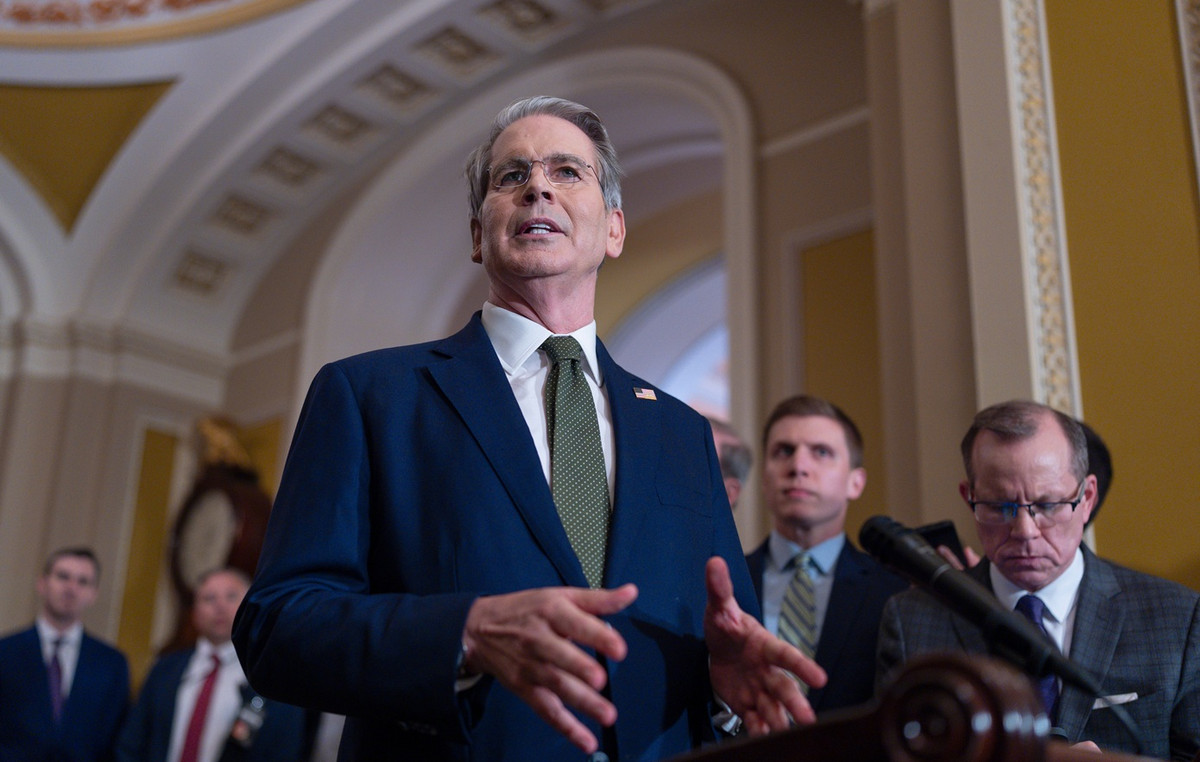O dollar rose 0.06%, quoted at R$ 5.147, around 9:25 am this Monday (20), hovering around stability amid a slight recovery of foreign currencies against the North American. However, investors remain risk-averse, and internal factors hamper the domestic market.
In recent weeks, fears about a recession global gained strength amidst a series of interest rate hikes in large economies, leading to a withdrawal of investments from markets considered risky and a drop in commodity prices with the expectation of lower demand, two factors that harm Brazil.
Furthermore, the real is harmed by the return to the radar of the fiscal risk in Brazil, with increased spending and possible disrespect for the spending ceiling, in addition to uncertainties in relation to Petrobras and fears of an intervention in the state-owned company’s pricing policy after a new readjustment in fuels which would be frowned upon by the market.
Throughout the week, investors will be on the lookout for new developments on Petrobras’ situation, as well as the release of the minutes of the last meeting of the Monetary Policy Committee (Copom ) and the Extended Consumer Price Index-15 (IPCA-15 ) of June, considered the preview of inflation.
O central bank will auction up to 15 thousand traditional foreign exchange swap contracts in this session for the purpose of rolling over the expiration date of August 1, 2022.
Last Friday (18), the dollar closed up 2.35%, quoted at R$ 5.146. already the Ibovespa fell 2.9%, which made the main index of the B3 stay below 100 thousand points, at 99,824.94 points, returning to the levels of November 2020.
overall feeling
Investors still maintain a strong global risk aversion triggered by fears about a possible general economic slowdown due to a series of interest rate hikes around the world to contain record levels of inflation, which would harm many types of investments.
The main cause for this aversion is the cycle of interest rate hikes in United States with the most recent increase announced by the Federal Reserve on May 4th. The autarchy has already raised interest rates by 0.75 percentage points, the biggest increase since 1994, and the market fears that the country’s economy is heading for a recession.
Higher interest rates in the United States attract investments to the country’s fixed income due to its high security and favor the dollar, but harm bond markets and stock exchanges around the world, including the US.
At the same time, investors are following data on the country’s economy to understand how aggressive the Fed could be in the process.
At the end of May and beginning of June, for example, the view that the municipality would not be so aggressive in the cycle and the end of lockdowns in important cities in the China alleviated fears and helped the Ibovespa and the dollar to recover.
In recent weeks, however, the scenario has changed. THE may inflation from the United States signaled a more negative picture, reinforcing higher terminal interest bets. The European Central Bank (ECB) signaled interest rate hikes starting in July, while the China faces a new increase in Covid-19 cases with fears of new restrictions and fiscal risk in Brazil has regained strength.
As a result, the combination of a weakened domestic scenario, with the return of tax risks and fears about interference in the Petrobras and the prospect of strong monetary tightening abroad once again harmed the Brazilian market.
Test your knowledge about the Ibovespa
Let’s start with an easy one: what is the Ibovespa?
Who is responsible for calculating the Ibovespa?
What types of assets are eligible to be listed on the Ibovespa?
Which of these is NOT a criterion for a stock to enter the Ibovespa
How many shares are currently in the theoretical portfolio of Ibovespa?
How often is the Ibovespa theoretical portfolio reviewed?
What is the most important stock on the Ibovespa?
What is the smallest share on the Ibovespa?
Each Ibovespa point is equivalent to 1 real. This statement is
What is the historical record for closing the Ibovespa?
Try again!
Tip: follow CNN Business to understand more about Ibovespa
Nice job!
You know a lot about the Ibovespa, but you could know a little more
Sensational!
Congratulations! Are you an Ibovespa expert?
*With information from Reuters
Source: CNN Brasil
I’m James Harper, a highly experienced and accomplished news writer for World Stock Market. I have been writing in the Politics section of the website for over five years, providing readers with up-to-date and insightful information about current events in politics. My work is widely read and respected by many industry professionals as well as laymen.







